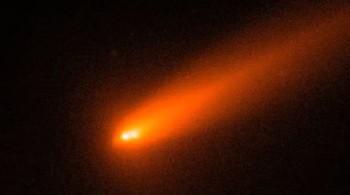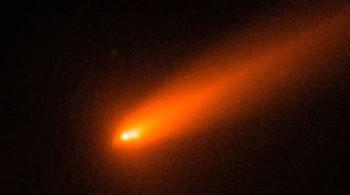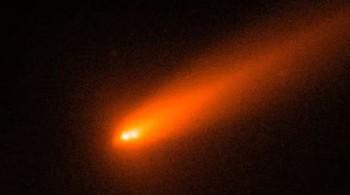
Comet C/2025 K1 (ATLAS) breaks into 3 after coming close to Sun
In a stunning astronomical event, Comet C/2025 K1 (ATLAS) has broken into three pieces after swinging too close to the Sun. This extraordinary occurrence was captured by astronomers using Italy’s Copernicus telescope, providing a rare glimpse into the fragile nature of comets. The comet’s nucleus became unstable after it passed close to the Sun on October 8, resulting in a spectacular split that has left scientists and space enthusiasts alike in awe.
Comet C/2025 K1 (ATLAS) was first discovered in May 2025 by the Asteroid Terrestrial-impact Last Alert System (ATLAS) survey. Initially, it was thought to be a single, intact comet, but as it approached the Sun, its behavior became increasingly erratic. As the comet drew closer to the Sun, the intense heat and gravitational forces began to take their toll on its fragile structure. The comet’s nucleus, which is made up of ice and rock, started to break apart, eventually resulting in a dramatic split into three distinct pieces.
The two larger chunks of the comet were found to be drifting approximately 2,000 kilometers apart, with a smaller third piece visible to the left of the pair. This remarkable event was captured in stunning images taken by the Copernicus telescope, which provided a unique perspective on the comet’s disintegration. The images show the two main fragments of the comet, with the smaller piece appearing as a faint, glowing trail to the left of the larger chunks.
The break-up of Comet C/2025 K1 (ATLAS) is not an unprecedented event, as comets are known to be fragile and prone to fragmentation. However, the circumstances surrounding this particular comet’s split are noteworthy. The comet’s close approach to the Sun, which brought it within a mere 1.2 astronomical units (AU) of the solar surface, is believed to have triggered the instability that ultimately led to its break-up. One astronomical unit is the average distance between the Earth and the Sun, which is approximately 149.6 million kilometers.
The study of comets like C/2025 K1 (ATLAS) provides valuable insights into the formation and evolution of our solar system. Comets are thought to be remnants from the early days of the solar system, and their composition can offer clues about the conditions that existed during the solar system’s formation. By analyzing the fragments of Comet C/2025 K1 (ATLAS), scientists may be able to gain a better understanding of the comet’s origin and the processes that led to its break-up.
The break-up of Comet C/2025 K1 (ATLAS) has also sparked interest among astronomers and space enthusiasts, who are eager to learn more about this rare event. The comet’s split has raised questions about the long-term stability of comets and the potential risks associated with their fragmentation. As the fragments of the comet continue to drift apart, scientists will be closely monitoring their trajectory and behavior, searching for clues about the comet’s composition and the forces that led to its break-up.
In conclusion, the break-up of Comet C/2025 K1 (ATLAS) is a remarkable event that has captivated the attention of astronomers and space enthusiasts around the world. The comet’s split into three pieces after its close approach to the Sun has provided a unique opportunity for scientists to study the fragile nature of comets and the forces that shape their behavior. As we continue to explore and learn more about our solar system, events like the break-up of Comet C/2025 K1 (ATLAS) remind us of the awe-inspiring complexity and beauty of the universe.




